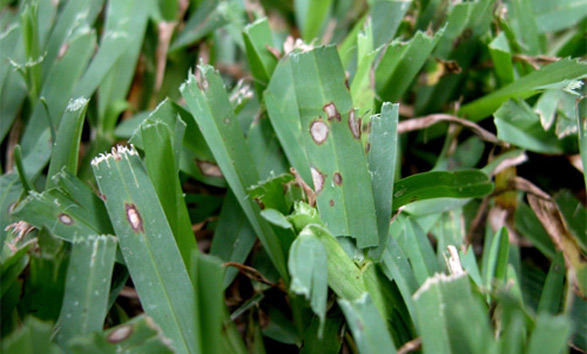
Leaf Spot in Turf
Leaf spot and melting-out diseases are incited by a group of fungi in the genera Bipolaris, Drechslera, and Exserohilum. Every cool-season grass species has a leaf spot/melting-out disease associated with it, but Kentucky bluegrass is particularly susceptible.These organisms, under pasture and native grassland conditions, cause leaf spots of little consequence. However, as cutting height is reduced and the nitrogen level increased, leaf spot diseases may become so severe that complete loss of the turf can occur. The causal fungi usually first invade the leaves, producing small brown spots. As the disease worsens, the spots on leaf blades expand and produce a dark purplish-red oval border around a tan center. The spots enlarge until the entire width of the leaf blade is blighted. The leaf-spotting or leaf-blighting phase is less damaging to the turf grass than is the melting-out (crown and root-rot) phase of the diseases. In melting-out, the crowns and roots are damaged, causing severe thinning of the turf.
